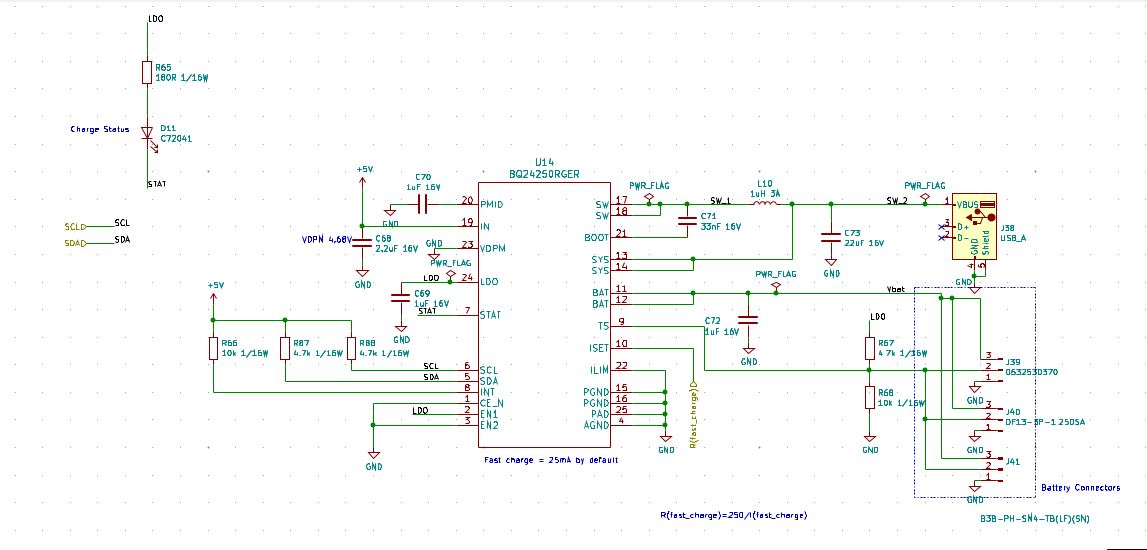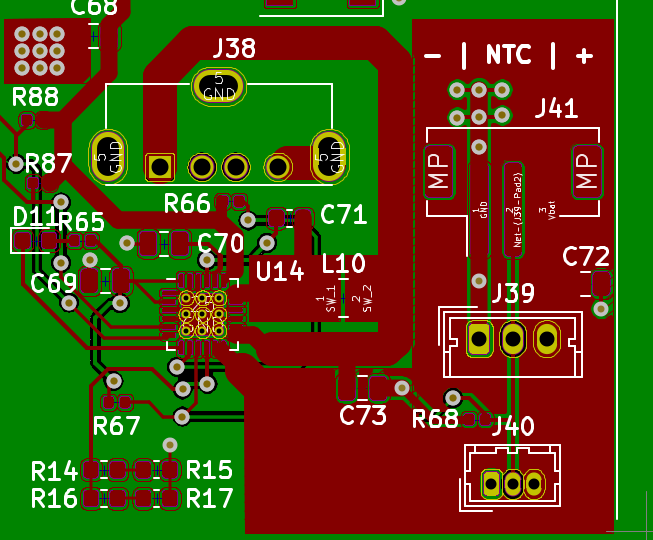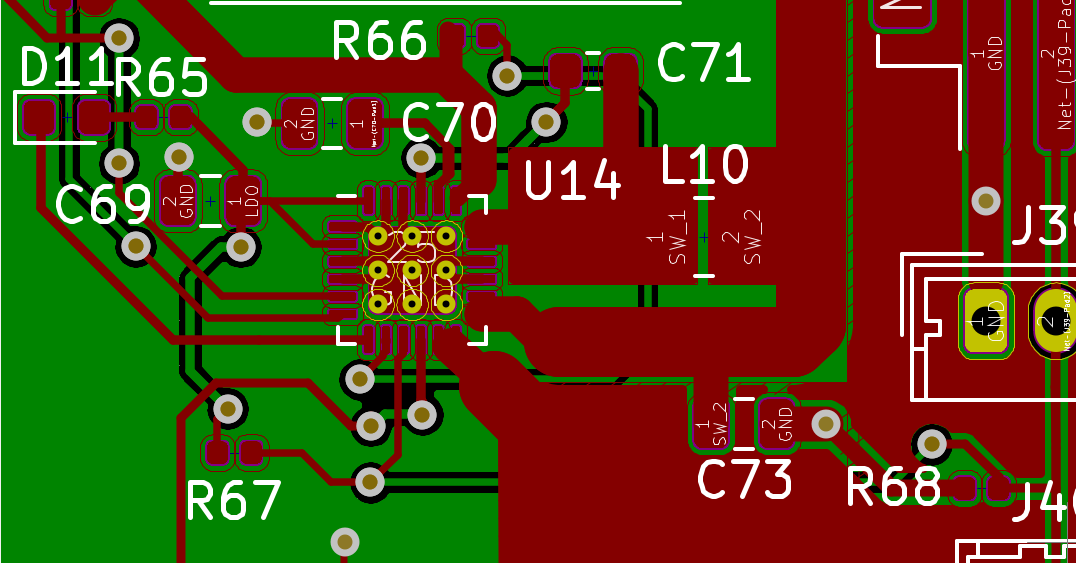Good day
I am having issues with the BQ24250 IC. I am building a battery charger with adjustable charge current (which I set through I2C). The problem is that whenever I select a charge current higher than 1A, the current being delivered to the battery seems to be too high.
For instance, if I set the charge current to 2A, I am measuring 2.1A and sometimes higher with my current clamp (on the positive wire of the LiPo battery). I have also tried lower currents such as 1.5A. With this setting, I am measuring 1.7A.
I have also found that the charge current jumps around to different values sometimes before it settles on a charge current.
When the charge current is higher than it should be, I also find the IC to go into current regulation loop mode (which I can see in the registers).
When the charge current is below 1A, the charge current is accurate.
What could be causing this unstable charge current behaviour?
Here is my circuit:
Here is my PCB layout:
Thanks in advance
John





